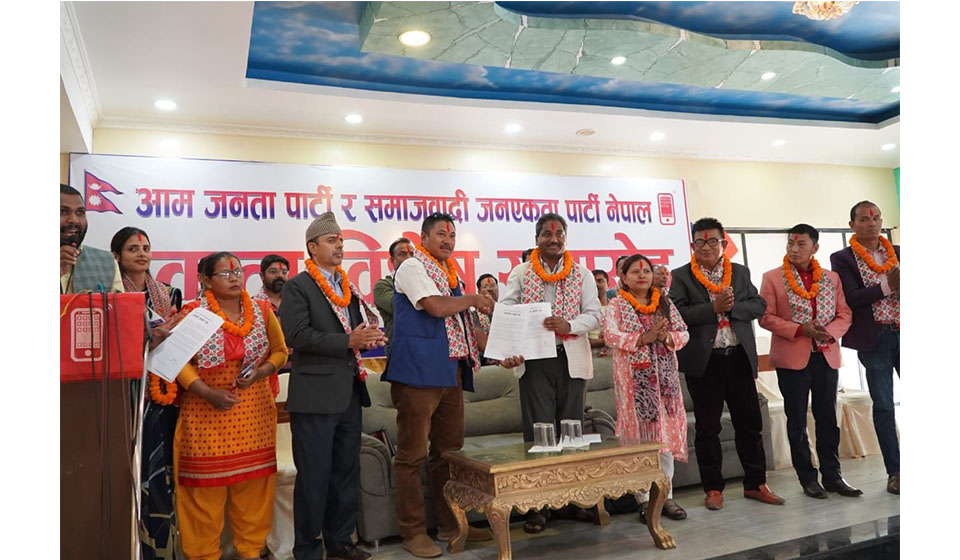
OR
Editorial
Eradicating tuberculosis
Published On: January 28, 2024 07:33 AM NPT By: Republica | @RepublicaNepal

In the battle against tuberculosis, Nepal finds itself facing an uphill struggle. Despite concerted efforts, Nepal remains the sixth most affected country by tuberculosis in Southeast Asia, posing a significant challenge to the government's ambitious goal of eradicating the disease by 2050. Addressing a program organized in the capital on the theme of 'Stop Tobacco Use, End Tuberculosis,' experts painted a concerning picture of the situation. The Sustainable Development Goal demands a 90 percent reduction in tuberculosis cases by 2035, coupled with a 95 percent decrease in related deaths. They have noted that achieving such targets was a formidable challenge, especially considering the latest surge in new infections. The latest national tuberculosis survey has revealed a troubling increase in new infections. This is in a stark contrast between pre-2019 surveys that indicated a lower tuberculosis rate with effective treatment. As the country battles to eradicate the tuberculosis, the rise in the infection rate poses a significant challenge with the WHO reporting over 69,000 new cases annually in Nepal
One of the main hurdles hindering progress, according to experts, is the significant number of patients obtaining medication from private health institutions instead of government facilities. Additionally, many patients reside in areas that are difficult to reach, making early detection and treatment a challenging task. The government data have shown that Madhesh Province leads with 24 percent of tuberculosis patients, followed closely by Bagmati and Lumbini provinces. These three provinces alone account for 68 percent of tuberculosis cases. Although the efficacy of tuberculosis treatment in Nepal is commendable, the malnutrition that is prevalent across the country remains another challenge as people suffering from malnutrition are more susceptible to this disease. The prevalence of smoking, alcohol consumption and other health issues like diabetes, cancer, and HIV have equally contributed to make things worse. On top all these hindrances stand the open border with India. The free movement of people across the international border poses a significant challenge in controlling tuberculosis infection.
As Professor Guy Marks, president of the International Union against Tuberculosis and Lung Disease has rightly suggested, this situation calls for Nepal to adopt comprehensive policies and programs to eradicate tuberculosis. Some of these measures may include mass screening, thorough treatment, and the use of digital x-rays in high-risk areas to achieve the 2035 reduction goal. It is equally critical to address issues like smoking, malnutrition as they are seen as critical obstacles to tuberculosis control in Nepal. Eradication of tuberculosis is feasible as its infection is relatively easy to identify and is curable with cure rates already approaching 100%. Early diagnosis and effective treatment can significantly reduce its transmission. It is high time Nepal urgently embraced innovative measures, including robust policies and targeted programs. Since the elimination of tuberculosis also depends in part on global elimination because of imported cases, Nepal must make collaborative efforts with neighboring countries particularly with India to overcome the complex challenges posed by this disease. Only through comprehensive and forward-thinking strategies can Nepal hope to achieve its ambitious goal of eradicating tuberculosis by 2050.
You May Like This

Boost investment in power transmission infrastructures
As Nepal strives to achieve uninterrupted power supply for all its citizens and capitalize on surplus electricity through exports, urgent... Read More...

Nepal online trade: Decorating Nepal
Nepal Online Trade is a business initiative of Sajak Yonjan that sells décor materials imported from China, Hong Kong, and... Read More...

Standard Chartered Bank Nepal, Nepal Mediciti join hands
KATHMANDU, Mar 1: Standard Chartered Bank Nepal Ltd (SCBNL) and Nepal Mediciti have signed an agreement to provide various discounted... Read More...



Just In
- Investing in Nepal for a Noble Cause
- Sunkoshi-Marin Diversion Project’s tunnel construction nears completion, breakthrough scheduled for May 8
- Govt tightens security arrangement for Third Investment Summit 2024
- Pesticide residue found in vegetables in Nepalgunj
- Aam Janata Party and Samajwadi Jana Ekata Party merge
- 1,600 participants confirmed for Nepal Investment Summit
- Ilam-2 by-elections held peacefully, vote count likely to start tonight
- NEA schedules five-day power cut across Kathmandu Valley for underground cable installation








-1200x560-wm_20240427144118.jpg)





Leave A Comment